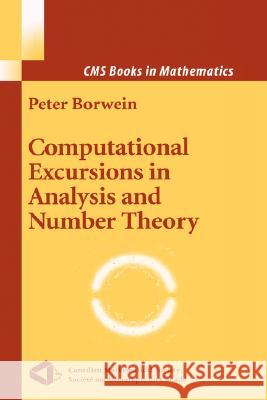Computational Excursions in Analysis and Number Theory » książka
Computational Excursions in Analysis and Number Theory
ISBN-13: 9780387954448 / Angielski / Twarda / 2002 / 220 str.
This book is designed for a topics course in computational number theory. It is based around a number of difficult old problems that live at the interface of analysis and number theory. Some of these problems are the following: The Integer Chebyshev Problem. Find a nonzero polynomial of degree n with integer eoeffieients that has smallest possible supremum norm on the unit interval. Littlewood's Problem. Find a polynomial of degree n with eoeffieients in the set { + 1, -I} that has smallest possible supremum norm on the unit disko The Prouhet-Tarry-Escott Problem. Find a polynomial with integer co effieients that is divisible by (z - l)n and has smallest possible 1 norm. (That 1 is, the sum of the absolute values of the eoeffieients is minimal.) Lehmer's Problem. Show that any monie polynomial p, p(O) i- 0, with in teger coefficients that is irreducible and that is not a cyclotomic polynomial has Mahler measure at least 1.1762 .... All of the above problems are at least forty years old; all are presumably very hard, certainly none are completely solved; and alllend themselves to extensive computational explorations. The techniques for tackling these problems are various and include proba bilistic methods, combinatorial methods, "the circle method," and Diophantine and analytic techniques. Computationally, the main tool is the LLL algorithm for finding small vectors in a lattice. The book is intended as an introduction to a diverse collection of techniques."











